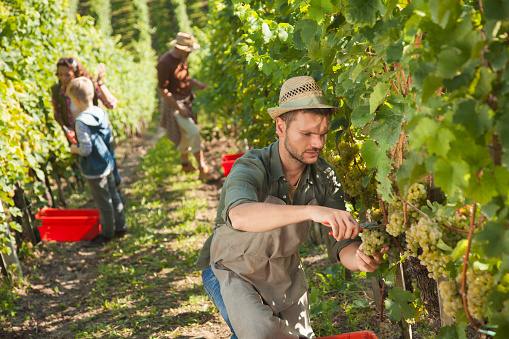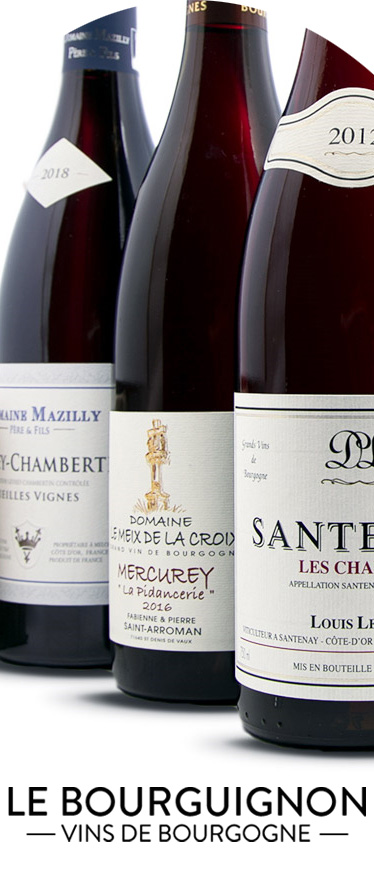The Châtillonnais, the land of choice for the crémants of Burgundy!
This vineyard is located in the north of the Côte d'Or in Burgundy-Franche-Comté, it has 250 hectares of vines, produced in 22 communes northwest of Dijon :
- Molesme
- Villedieu
- Griselles
- Marcenay
- Larrey
- Poinçon-lès-Larrey
- Gumville
- Noiron
- Bouix
- Pothières
- Charrey
- Villers-Patras
- Vix
- Montliot
- Chaumont
- Obtrated
- Basket weaver
- Belan
- Mosson
- Thoires
- Brion
- Bissey
More than 2,000 years of history…
According to the books of the old days, everything began between the Carolingian era and the nineteenth century. Gradually the wines of Châtillonnais become famous. Then came several disasters : war, the phylloxera crisis, economic upheavals, … thus the vine disappeared little by little.
From the 1980s, the vineyard experienced a new image thanks to winemakers passionate about their terroir and their traditional know-how.

Its landscapes are drawn through its wild nature, its rivers, its forests and its many valleys,… an authentic territory is revealed!
The Châtillonnais has been awarded the label "Vignobles et Découvertes", which obliges the inhabitants of the vineyard to respect some requirements such as:
- authenticity
- openness to cultural, natural and human heritage
- the happiness of transmitting their knowledge, passions and customs
- the discovery of the world of wine and the vine
- the need to preserve nature (fauna and flora)
- to welcome tourists with kindness
Recall that the burgundy region is divided into several vineyards:
- Chablis and Auxerrois
- The Côte de Nuits
- The Côte de Beaune
- The Chalonnaise Coast
- The Mâconnais
- The Châtillonnais
The Burgundy vineyard seen from the sky: take-off scheduled for November 17 on https://t.co/mjmOuTaHJz. #PrenezdelaHauteur pic.twitter.com/SU00aCFWxc
— Wines of Burgundy (@VinsdeBourgogne) November 14, 2016
The vineyards of the Châtillonnais flourish on steep hillsides, south- and south-east orientations and clay-limestone soils of the Jurassic. Limestone pebbles collapsed from the top of the coast are added to the marls of the slope, beneficial to the cultivation of the vine.
In summer as in autumn the grapes enjoy a beautiful sunshine, this is favorable for their ripening.
Grape varieties
White wines are made from:
- Chardonnay
It offers a well-balanced white wine, an aromatic bouquet, with floral aromas (acacia,…), dried fruits (almond,…), undergrowth (mushroom,…) and chemical (fresh butter,…).
- Aligoté
The aligoté awakens the palate, in the mouth it is lively, nervous, presenting aromas of citrus (lemon,…), dried fruits (hazelnut,…), yellow and white fruits (white peach, green apple,…).
Red wines are made from:
- Pinot Noir
This grape variety makes it possible to offer a wine of a purple color, with aromas of flowers (hawthorn,…), black fruits (blackcurrant, cherry,…), with the time of empyreumatic notes (coffee, cocoa,…) and undergrowth (cep,…) Develop.
- Gamay
A bright red color with shine, aromas of ripe red fruits (strawberry, cherry,…), spices (licorice,…) and fermentative (English candy,…).

***
In Burgundy, the different plots determine a regional, communal, premier cru and grand cru appellation according to their geographical location.
Hierarchy of appellations in Burgundy
In order to better navigate, its 83 appellations have been divided into 4 levels:
- Grands Cru appellations
- Premiers cru appellations
- Communal appellations (villages)
- Regional names (sometimes called "generic" or "sub-regional")
In the Châtillonnais, we find these regional appellations:
- Burgundy
- Burgundy Aligoté
- Burgundy Passe-Tout-Grains
- Sparkling Burgundy
- Burgundy Hillsides
- Crémant de Bourgogne
Regional Burgundies can be associated with a village name.
The Kingdom of the Crémants of Burgundy
The Châtillonnais is specialized in Crémants de Bourgogne (85% of local production), they are known for their good value for money thanks to the know-how of the winegrowers. During winemaking, two grape varieties are used: Chardonnay and Pinot Noir, but some winemakers also use Gamay and Aligoté.
Classified as a controlled designation of origin (AOC), it is a sparkling sparkling wine of white or rosé color, visually the bubbles are fine, on the nose we feel delicate notes of fruit, in the mouth the crémant is lively, fresh and of good structure. Ideal to accompany an aperitif, a dessert or to honor a party like that of the Châtillonnais called the festival of crémant and tape-chaudrons or the truffles and crémant festival.
The Crémant du Châtillonnais is essential for fun!
The festival of crémant and tape-cauldrons
Every third Saturday of March in Châtillon, a carnival parade takes place in order to celebrate spring while honoring the Crémant de Bourgogne produced in the Châtillonnais.
During this festive event, a parade of floats is presented as well as a multitude of animations without forgetting the tasting of crémant ! It is an old tradition dating from the fifth century, at the time of the Burgundians. It is said that the inhabitants of Châtillonnais energetically tapped on cauldrons in order to hunt winter and accelerate the arrival of spring!
Presentation of La #fete du crémant et tape chaudrons in Châtillon-sur-Seine with Hélène Collin ▶️ in 9:50 am in the morning https://t.co/OnBCfCFPst pic.twitter.com/MfVxucN6Ik
— France 3 Burgundy (@F3Bourgogne) March 14, 2017
The truffle and crémant festival, treasures of terroirs
Organized by the Côte-d'Orienne Truffle Association in partnership with the Maison de la Forêt, the Association Accueil en Châtillonnais and the Châtillonnais Tourist Office. It takes place every first Sunday in December, since 2016.
During this animation two treasures of the Châtillonnais terroir are highlighted: the truffle and the crémant, both prized by gourmets. And for the most greedy, a market, tastings and conferences are prepared.



